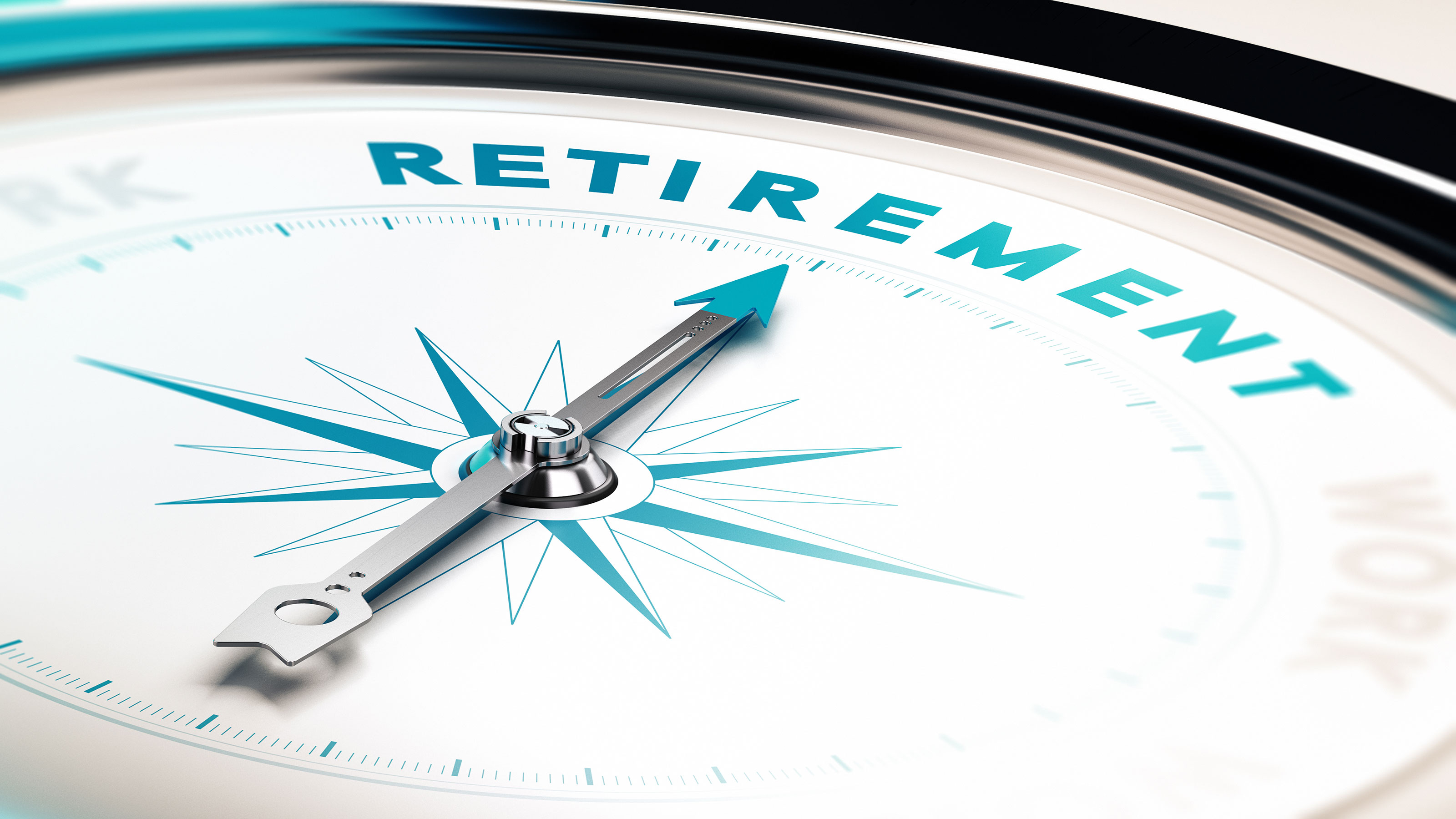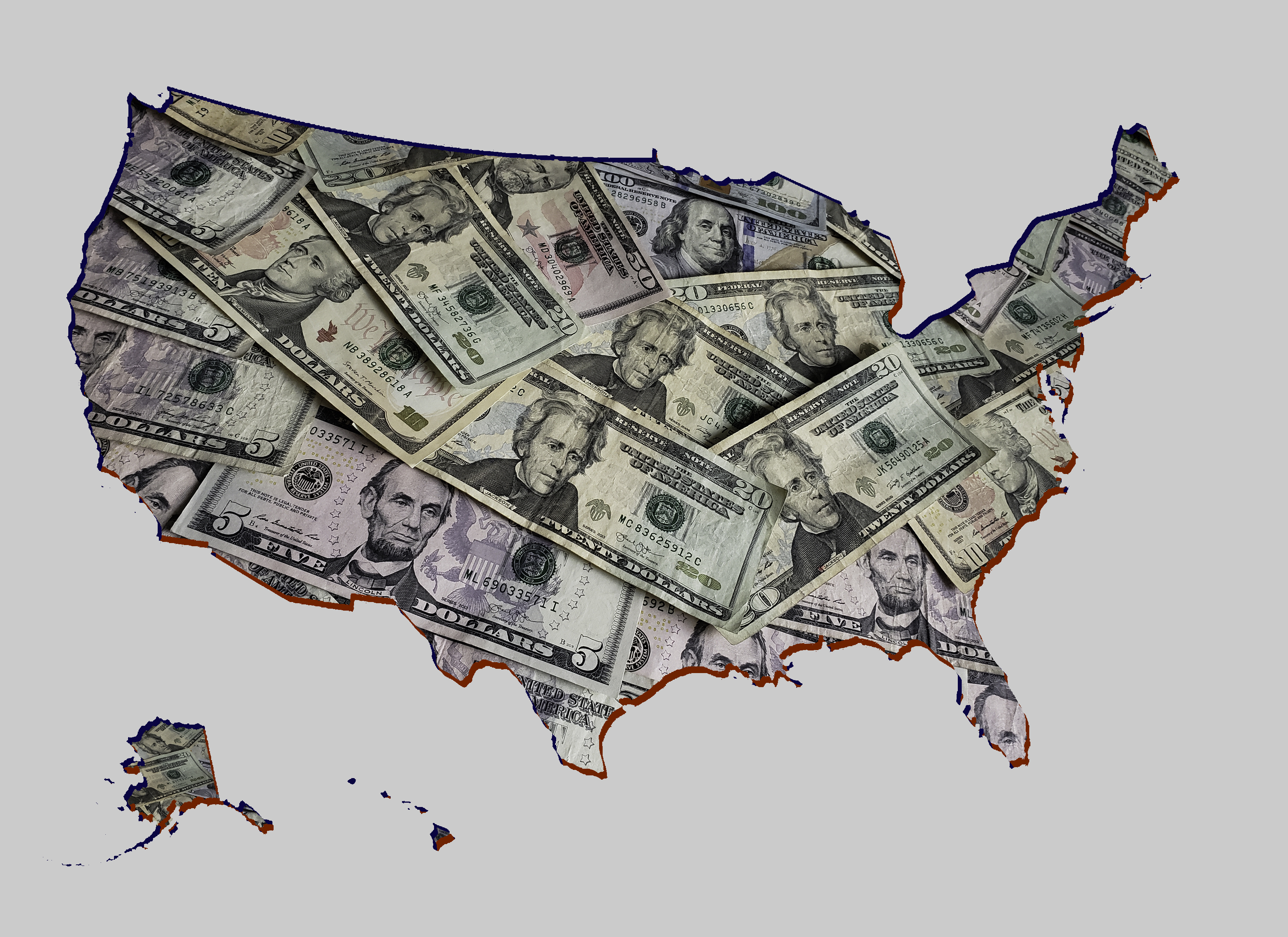SECURE 2.0 Act Summary: New Retirement Savings Changes to Know
The SECURE 2.0 Act makes major changes to 401(k), IRA, Roth, and other retirement savings plans. Here's what you need to know.


The SECURE 2.0 Act is a significant piece of legislation that has brought about substantial changes to the retirement account rules in the United States in recent years. These changes affect retirement savings plans such as 401(k), 403(b), IRA, Roth accounts, and related tax breaks.
The primary objective of SECURE 2.0 is to encourage more workers to save for retirement. However, complex changes have confused some taxpayers and plan sponsors. Therefore, it is important to understand the key points of the law.
Here's what you need to know.
From just $107.88 $24.99 for Kiplinger Personal Finance
Become a smarter, better informed investor. Subscribe from just $107.88 $24.99, plus get up to 4 Special Issues

Sign up for Kiplinger’s Free Newsletters
Profit and prosper with the best of expert advice on investing, taxes, retirement, personal finance and more - straight to your e-mail.
Profit and prosper with the best of expert advice - straight to your e-mail.
Overview
SECURE 2.0 Act retirement plan changes
More than 90 provisions in SECURE 2.0 cover all types of retirement savings plans.
Some requirements are in place as of last year. Other provisions become effective this year, in 2025, or in later years, i.e., 2026, or 2027.
Some changes in SECURE 2.0 involve:
- RMD Age Rules and Penalties
- Higher 401(k) Catch-up Contributions
- Automatic Enrollment Changes
- Emergency Withdrawal Flexibility
- 529 Plan Roth Rollovers
- A Student Loan Payment 401(k) Match
This SECURE 2.0 summary highlights key provisions of the new law and potential implications for your retirement planning.
Required Minimum Distributions
SECURE Act 2.0 RMD changes
Before discussing the SECURE 2.0 RMD changes, it's helpful to review what an RMD is.
- A required minimum distribution is money that must be taken out of a retirement savings plan.
- More specifically, RMDs are the minimum amounts that must come from given retirement plan accounts each year once the account holder reaches a certain age.
- RMDs, calculated based on a formula described below, are generally designed to ensure that retirees gradually draw down their retirement savings and pay taxes on the funds as they withdraw them.
SECURE RMD age change. Under the law before SECURE 2.0, you generally had to take RMDs from your retirement plan beginning at age 72. SECURE 2.0 increased the required minimum distribution age to 73 as of January 1, 2023.
The bump to age 73 is one of several new RMD rules. However, the RMD age will eventually move to 75.
Delays in the age for taking RMDs raise tax implications and can present practical challenges. The latter can be particularly significant for retirees with lower incomes, who typically use RMDs to cover living expenses.
For example, pushing the RMD age back might be a "nonevent" for some retirees, according to Paul Camhi, vice president and senior financial advisor at The Wealth Alliance, who told Kiplinger, "Most [older adults] can't afford to wait until 72 [to take RMDs], let alone until age 75."
RMD rule delay for inherited IRAs. The IRS again delayed the implementation of IRA RMD final rules, this time until 2025.
- With previous IRS relief, penalties are waived for missed RMDs from specific IRAs inherited in 2020, 2021, 2022, and 2023.
- (Missing an RMD or failing to take the appropriate distribution amount incurs a 25% IRS penalty — down from 50% due to SECURE 2.0 RMD penalty changes — added to the amount that should have been withdrawn.) However, the penalty can be as low as 10%.
- IRS transition relief has been offered due to confusion over the timing of required plan payouts and implementation of related legislative changes.
The RMD rule delay allowed beneficiaries of inherited IRAs to better understand distribution requirements and take payouts. The extension offers more time to roll over distributions from earlier this year that were mischaracterized as RMDs.
Related: Inherited an IRA? Distribution Rules Every Beneficiary Should Know
RMDs and Roth 401(k)s. Beginning in 2024, the SECURE 2.0 Act eliminated RMDs for qualified employer Roth 401(k) plan accounts.
Previously, there was a difference in the rules that applied to Roth 401(k) accounts in employer plans versus Roth IRAs (i.e., the latter were not subject to required minimum distributions).
For more information see New Roth 401(k) Changes to Know.
As a result, it is important to consider how SECURE 2.0 RMD changes could impact you and plan accordingly.
SECURE 2.0 401(k) Changes
How does SECURE 2.0 affect 401(k)?
SECURE 2.0 contains numerous provisions that impact 401(k) plans. These provisions take effect in various years and address issues, including financial incentives to contribute to a retirement plan, hardship withdrawal rules, automatic enrollment, contribution limits, and part-time worker access.
Each is mentioned below.
401(k) Financial Incentives
Small incentives to contribute to a retirement plan. The SECURE 2.0 Act allows your employer to offer small financial incentives (e.g., low-dollar gift cards) to help boost employee participation in a workplace retirement plan.
This provision became effective beginning January 2023.
Withdrawal Rules
Hardship withdrawal 401(k)
Emergency expense distributions. As of 2024, under the SECURE 2.0 Act, you can take an early “emergency” distribution from your retirement account to cover unforeseeable or immediate financial needs.
That emergency distribution of up to $1,000, could only be taken once during the year, but won't be subject to the usual additional 10 percent tax that applies to early distributions.
But: if you choose not to repay the distribution within a certain time, you won't be allowed to take other emergency distributions for three years.
- Other hardship withdrawals are provided for in the SECURE 2.0 Act including 403(b) plans.
- (Currently, distribution rules for 403(b) and 401(k) plans are different, so SECURE 2.0 would conform to those rules.)
- Also, under SECURE 2.0, penalty-free withdrawals, on small amounts of money from retirement plans in cases involving domestic abuse, will be allowed.
For more information see New 401(k) Early Withdrawal Tax Rules.
2025 Auto Enrollment
Automatic enrollment SECURE 2.0
Automatic enrollment in retirement plans. Beginning in 2025, the SECURE 2.0 Act expands automatic enrollment in retirement plans. The rationale is that automatic enrollment in 401(k) plans has been shown to increase participation.
According to the U.S. Department of Labor, "Whether you already have a 401(k) plan or are considering starting one, automatic enrollment 401(k) plans offer many advantages."
In addition to helping small businesses attract and retain employees, the Labor Department points to tax advantages associated with 401(k) participation (including the deduction of employer contributions and deferred taxation on contributions and earnings until distribution).
With some exceptions for small businesses, SECURE 2.0 requires 401(k) and 403(b) plans to automatically enroll eligible participants, who can opt out of participation.
Contributions Limits
SECURE 2.0 contribution limits

Higher catch-up contribution limit. Right now, if you are 50 or older, you can make catch-up contributions to your retirement plan up to certain limits.
- A catch-up contribution is a special provision in retirement savings plans that allows older individuals to contribute additional amounts beyond the regular limits.
- This option is typically available to workers aged 50 and older, allowing them to rapidly increase their retirement savings in the years leading up to retirement.
- It's essentially seen as a way to "catch up" if one hasn't been able to save enough earlier or to maximize retirement savings closer to retirement.
SECURE 2.0 increases those limits, beginning in 2025, to the greater of $10,000 or 50 percent more than the regular catch-up amount if you are 60, 61, 62, or 63 years old. After 2025, those amounts will be indexed for inflation.
For more information, see New SECURE 2025 Super Catch-Up Contribution for Ages 60-63.
Also, as of 2024, SECURE 2.0 Act rules, which are now delayed, were designed to impact how eligible workers with incomes over $145,000 make catch-up contributions. (The income threshold will be adjusted for inflation.) See below for more information on the delay of this rule to 2027.
Catch-up Contributions
SECURE Roth catch-up
Under SECURE 2.0, if you are at least 50 years old and earned $145,000 or more in the previous year, you can make catch-up contributions to your employer-sponsored 401(k) account. But you would have to make those extra contributions on a Roth basis, using after-tax money.
- You couldn’t get tax deductions on those catch-up contributions as you would with typical 401(k) contributions, but you could withdraw the money tax-free when you retire.
- The SECURE 2.0 Roth catch-up contribution rule won’t apply to taxpayers making $144,999 or less in a tax year.
Note: The Roth catch-up rule was originally supposed to take effect in 2024. However, due to problems with implementing Roth catch-up contributions, the IRS announced that the final rules surrounding Roth catch-up contributions for high earners age 50 or over won’t be fully implemented until after December 31, 2026.
(Technically, the Roth catch-up rule is applicable beginning in 2026. But the IRS is essentially offering a grace period until 2027 for employers and plans to implement the rule in good faith.)
More: New IRS Start Date for Mandatory Roth Catch-Up Contributions
Student Loans
SECURE student loan match
Employer fund match for student loan payments. Under the SECURE 2.0 Act, your employer can make a matching contribution to your retirement plan account based on your student loan payment amount. This is designed to address high student loan debt, which keeps people from saving for retirement.
This student loan match provision became effective as of 2024. For more information, see IRS: Here's How to Get a 401(k) Match for Your Student Loan Payment.
Note: While the Biden administration had forgiven billions of dollars in student loan debt through special programs, litigation stalled some of those efforts. Additionally, under the second Trump administration, student loan forgiveness applications are backlogged, and related student loan programs have changed.
For more information, see: Trump Targets Student Loan Forgiveness: How Taxes and Repayment Could Change.

529 Plan Rollovers
529 SECURE Act Roth IRA
Roth rollover option for 529 plans. As of 2024, SECURE 2.0 changes 529 plan rules.
A 529 plan is a tax-advantaged investment account designed to encourage saving for future education expenses. Named after Section 529 of the Internal Revenue Code, these plans allow individuals to set aside money for a beneficiary's educational costs, typically for college but also potentially for K-12 education in some cases.
The funds in a 529 plan grow tax-free, and withdrawals are also tax-free when used for qualified educational expenses.
States or educational institutions usually sponsor these plans and offer various investment options. While the funds are primarily used for the account beneficiary, the account owner maintains control over the funds and can change beneficiaries if needed.
Under the new SECURE 2.0 rules:
- In limited circumstances (i.e., there are a lot of requirements that must be met, including that the Roth IRA account must be in the name of the 529 plan beneficiary)
- Some people may be able to rollover a 529 plan that they have maintained for at least 15 years to a Roth IRA.
Annual limits for the rollover would have to be within the annual contribution limit and there will be a $35,000 lifetime limit on what can be rolled to the Roth IRA.
Related: 529 Plans Get a Boost With Tax-Free Rollovers to Roth IRAs
Trump 2025 Tax Bill Changes to 529 Plans. Under the 2025 GOP tax and spending bill, known by some as the "big beautiful bill," 529 education savings plans were expanded.
For example, the annual tax-free withdrawal limit for K-12 expenses was increased to $20,000, and qualified expenses now include tutoring and online resources.
The 2025 tax law now allows these funds to be used for postsecondary vocational training and other lifelong learning credentials, not just traditional college degrees.
2027 Savers Match
SECURE 2.0 Saver's Credit
Saver’s match. Beginning in 2027, the SECURE 2.0 Act replaces the nonrefundable Saver’s Credit for some IRA and retirement plan contributions with a federal matching contribution that will be deposited into your IRA or retirement plan.
The so-called "Saver’s Match" will be 50% of IRA or retirement plan contributions up to $2,000 per person. However, some income limits and phase-outs will apply.
Related: Saver's Credit: Do You Qualify?
Part-Time Workers
Part-time employees SECURE Act changes
The SECURE 2.0 Act contains many more provisions that could impact your retirement savings account (and, in turn, potentially your taxes and tax breaks).
Some of those provisions involve everything from part-time worker access to employer retirement plans and small business tax credits to contributions to SIMPLE edits, to contributions to SIMPLE, and SEP plans.
- For example, the IRS has recently made important changes to help part-time workers save for retirement.
- As of 2025, more part-time workers can join their company's retirement plans, like 401(k)s and 403(b)s.
- Basically, if you work at least 500 hours a year for two years in a row, you'll get the chance to start saving in these plans.
- This opens up retirement savings options for people who might have been left out before.
For now, the IRS is giving companies more time to prepare for these changes, and is asking for feedback on proposed. Stay tuned.
Other SECURE 2.0 provisions address issues surrounding stock ownership and savings bonds. Consult a financial advisor or trusted tax professional if you have questions or concerns about how these changes might impact you or your taxes.
Lost Accounts
Lost 401(k) accounts database

Retirement savings “lost and found.” Have you ever lost track of your 401(k)? Well, the SECURE 2.0 Act enables the creation of a searchable database to help people find retirement benefits that they lost track of.
The retirement savings “lost and found” will be housed at the Department of Labor and will launch soon.
Data show that millions of 401(k) accounts are regularly forgotten, amounting to nearly a trillion dollars in unclaimed retirement benefits.
For more information, see Kiplinger's report Need More Money in Retirement? A Lost 401(k) May Rescue You.
More on Retirement Savings Accounts
- Guide to Required Minimum Distributions (RMDs)
- New SECURE Enhanced Catch-Ups for Those 60-63
- New Roth 401(k) Rule Changes to Know
- Ten Retirement Tax Plan Moves to Make Before December 31
Profit and prosper with the best of Kiplinger's advice on investing, taxes, retirement, personal finance and much more. Delivered daily. Enter your email in the box and click Sign Me Up.

Kelley R. Taylor is the senior tax editor at Kiplinger.com, where she breaks down federal and state tax rules and news to help readers navigate their finances with confidence. A corporate attorney and business journalist with more than 20 years of experience, Kelley has helped taxpayers make sense of shifting U.S. tax law and policy from the Affordable Care Act (ACA) and the Tax Cuts and Jobs Act (TCJA), to SECURE 2.0, the Inflation Reduction Act, and most recently, the 2025 “Big, Beautiful Bill.” She has covered issues ranging from partnerships, carried interest, compensation and benefits, and tax‑exempt organizations to RMDs, capital gains taxes, and energy tax credits. Her award‑winning work has been featured in numerous national and specialty publications.
-
 New California Wealth Tax for 2026: What's Happening Now
New California Wealth Tax for 2026: What's Happening NowState Taxes California has considered taxing wealth before, but the latest proposal seems to be different.
-
 Your 5-Step Guide to Discovering Whether a Lawyer Is Shady
Your 5-Step Guide to Discovering Whether a Lawyer Is ShadyResearch shows you can't rely on some state bar websites to vet a lawyer you're considering hiring. Here's how to check out a lawyer before you hire.
-
 Steps to Keep Your Student Focused on College, Not Finances
Steps to Keep Your Student Focused on College, Not FinancesToo many students drop out due to financial strain. This plan can help families plan for the costs and get timely aid that sees students through to graduation.
-
 New California Wealth Tax for 2026: What's Happening Now
New California Wealth Tax for 2026: What's Happening NowState Taxes California has considered taxing wealth before, but the latest proposal seems to be different.
-
 A Free Tax Filing Option Has Disappeared for 2026: Here's What That Means for You
A Free Tax Filing Option Has Disappeared for 2026: Here's What That Means for YouTax Filing Tax season officially opens on January 26. But you'll have one less way to submit your tax return for free. Here's what you need to know.
-
 Georgia Tax Rebate And Income Elimination? What 2026 Could Mean For You
Georgia Tax Rebate And Income Elimination? What 2026 Could Mean For YouState Tax We break down how lawmakers aim to axe the state income tax and how much you could get in a Georgia tax refund in 2026.
-
 2026 State Tax Changes to Know Now: Is Your Tax Rate Lower?
2026 State Tax Changes to Know Now: Is Your Tax Rate Lower?Tax Changes As a new year begins, taxpayers across the country are navigating a new round of state tax changes.
-
 When Do W-2s Arrive? 2026 Deadline and 'Big Beautiful Bill' Changes
When Do W-2s Arrive? 2026 Deadline and 'Big Beautiful Bill' ChangesTax Deadlines Mark your calendar: Feb 2 is the big W-2 release date. Here’s the delivery scoop and what the Trump tax changes might mean for your taxes.
-
 States That Tax Social Security Benefits in 2026
States That Tax Social Security Benefits in 2026Retirement Tax Not all retirees who live in states that tax Social Security benefits have to pay state income taxes. Will your benefits be taxed?
-
 3 Major Changes to the Charitable Deduction for 2026
3 Major Changes to the Charitable Deduction for 2026Tax Breaks About 144 million Americans might qualify for the 2026 universal charity deduction, while high earners face new IRS limits. Here's what to know.
-
 Retirees in These 7 States Could Pay Less Property Taxes Next Year
Retirees in These 7 States Could Pay Less Property Taxes Next YearState Taxes Retirement property tax bills could be up to 65% cheaper for some older adults in 2026. Do you qualify?